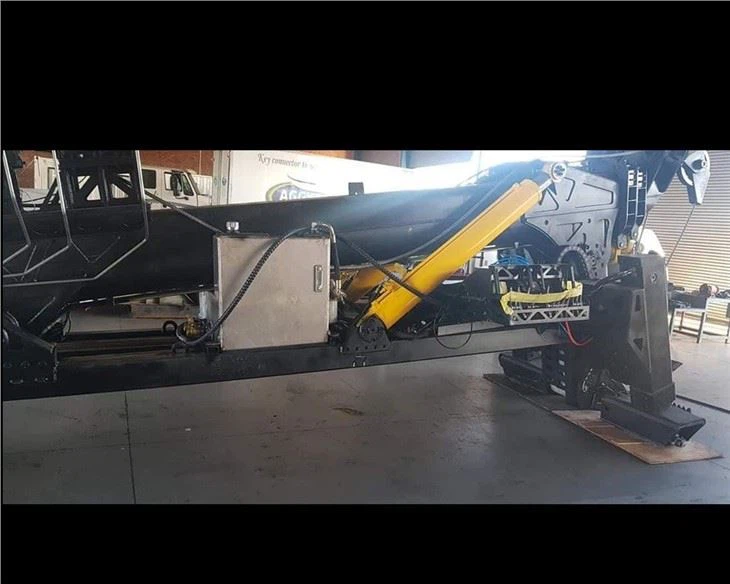Understanding Tractor Heads: A Comprehensive Guide

Tractor heads, often known simply as truck heads or prime movers, are an essential component in the logistics and transportation industry. These powerful vehicles are designed to tow semi-trailers and are crucial in the movement of goods across vast distances. In this article, we will explore the various aspects of tractor heads, including their types, features, maintenance, and more. Whether you are a seasoned driver or a newcomer to the industry, this comprehensive guide aims to provide valuable insights and practical tips for understanding this vital vehicle.
What is a Tractor Head?
A tractor head is a motor vehicle that is specifically designed to pull a semi-trailer. It features a front cab where the driver sits, and its powerful engine allows it to navigate through different terrains while hauling heavy loads. Unlike standard trucks, tractor heads are characterized by their detachable trailers, enabling the transport of various cargo types.
Types of Tractor Heads
1. Conventional Tractor
The conventional tractor head, also known as a bonneted tractor, has its engine positioned over the front axle. This design allows for better visibility and spaciousness within the cab.
2. Cabover Tractor
Cabover tractors have a flat-nose design, meaning the engine is positioned directly above the front axle. This design offers a shorter overall length, making them easier to maneuver in urban settings.
3. Heavy-Duty Tractor

Heavy-duty tractors are built for extreme hauling capacities. They are often used in industries such as construction and mining, where they can transport extremely heavy loads over rough terrain.
4. Light-Duty Tractor
Light-duty tractors are ideal for smaller transport tasks. They are typically used for lighter loads and are more fuel-efficient, making them suitable for local deliveries.
Features of Tractor Heads

Understanding the features of tractor heads helps in selecting the right one for specific needs. Here are several critical features to consider:
1. Engine Power
The power of the engine plays a vital role in determining the tractor head’s performance. Common engine outputs range from 300 to 600 horsepower, depending on the intended use.
2. Transmission Type
Most tractor heads utilize either manual or automatic transmission systems. The choice between them impacts driving comfort and fuel efficiency.
3. Fuel Efficiency
Fuel efficiency is paramount in reducing overall operational costs. Modern tractor heads often include advanced technology to optimize fuel consumption.
4. Axle Configuration
Tractor heads come in several axle configurations including 4×2, 6×4, and 8×4. The number and arrangement of axles determine the vehicle’s load-bearing capacity and handling characteristics.
The Role of Tractor Heads in Transportation
Tractor heads play an integral role in various sectors within the transportation industry. Here, we explore some of their primary applications.
1. Freight Transport
The most common use for tractor heads is freight transport. They connect to trailers loaded with goods, driving them to specified destinations across cities, states, or even international borders.
2. Construction Industry
In the construction sector, tractor heads transport heavy equipment and materials. Their robust nature and adaptability to different terrains make them ideal for moving construction loads.
3. Agriculture
Agricultural tractor heads are utilized to carry produce or transport farming machinery to various locations. They are essential during harvest seasons when timely delivery is crucial.
Choosing the Right Tractor Head
Selecting the right tractor head involves considering several factors. Here are practical tips on making an informed choice:
1. Determine Your Load Requirements
Assess the maximum weight you intend to transport regularly. Heavy loads necessitate powerful tractor heads with higher torque and horsepower.
2. Consider the Terrain
Understanding the terrain where you will be operating can affect your choice. Off-road paths may require heavy-duty models designed for rugged conditions.
3. Evaluate Fuel Efficiency
Look for models that boast fuel efficiency, as this contributes to lower operational costs in the long run.
4. Maintenance and Serviceability
Choose a tractor head brand with a solid track record for reliability and service availability. This will save you time and money in repairs and maintenance.
Maintenance Tips for Tractor Heads
1. Regular Oil Changes
Change the engine oil according to the manufacturer’s recommendations. Clean oil keeps the engine parts lubricated and reduces wear and tear.
2. Tire Inspections
Regularly check tire pressure and tread depth. Properly inflated tires ensure better fuel efficiency and handling.
3. Brake System Monitoring
Inspect the brake system for wear. Effective brakes are essential for safety, especially when hauling heavy loads.
4. Scheduled Servicing
Follow the maintenance schedule provided by the manufacturer. Regular servicing can catch potential issues before they become significant problems.
Innovations in Tractor Head Technology
Continual advancements in technology are transforming the capabilities of tractor heads. Here are some of the latest innovations:
1. Autonomous Driving Technology
Some modern tractor heads now feature autonomous driving capabilities, which can enhance safety and improve fuel efficiency during long hauls.
2. Fleet Management Systems
Fleet management systems allow for real-time tracking, maintenance alerts, and performance analysis, helping businesses optimize their operations.
3. Enhanced Safety Features
New safety features, such as collision avoidance systems and lane-keeping assist, are being integrated into tractor head designs to reduce accidents on the road.
Environmental Impact of Tractor Heads
The environmental impact of tractor heads is a crucial factor in today’s transportation sector. Here, we discuss some aspects:
1. Emission Standards
Many countries enforce strict emission standards that tractor heads must comply with, encouraging manufacturers to develop cleaner engines.
2. Fuel Alternatives
The use of alternative fuels, such as biodiesel and compressed natural gas (CNG), is growing, reducing the carbon footprint associated with traditional diesel engines.
3. Eco-Friendly Features
Innovations such as hybrid engines and regenerative braking systems help minimize environmental impact while maintaining performance.
Frequently Asked Questions (FAQs)
1. What is the difference between a tractor head and a standard truck?
A tractor head is designed specifically to pull semi-trailers and has a more powerful engine, whereas standard trucks are typically used for transporting lighter cargo without detachable trailers.
2. How do I maintain my tractor head’s engine?
Regular oil changes, air filter replacements, and scheduled services according to the manufacturer’s guidelines are crucial for engine maintenance.

3. What are the typical operating costs associated with tractor heads?
Operating costs include fuel, maintenance, insurance, and driver wages. Fuel efficiency plays a significant role in overall costs.
4. Can I use a light-duty tractor head for heavy loads?
No, light-duty tractor heads are not designed for heavy loads. Using them for such purposes can lead to mechanical failure and safety hazards.
5. How often should I inspect my tractor head?
Regular inspections should be conducted weekly, with more comprehensive checks performed quarterly or as specified by the manufacturer.
6. Are there any regulations I need to be aware of when operating a tractor head?
Yes, regulations vary by country and region, covering aspects such as weight limits, emissions standards, and necessary permits for operating heavy vehicles.
Conclusion
Investing in a tractor head is critical for businesses operating in logistics, construction, agriculture, and more. By understanding the types, features, maintenance requirements, and innovations related to tractor heads, operators can make informed decisions that enhance their efficiency and profitability. This comprehensive guide serves as a valuable resource for both new and experienced drivers in optimizing their operations and ensuring the longevity of their vehicles.
